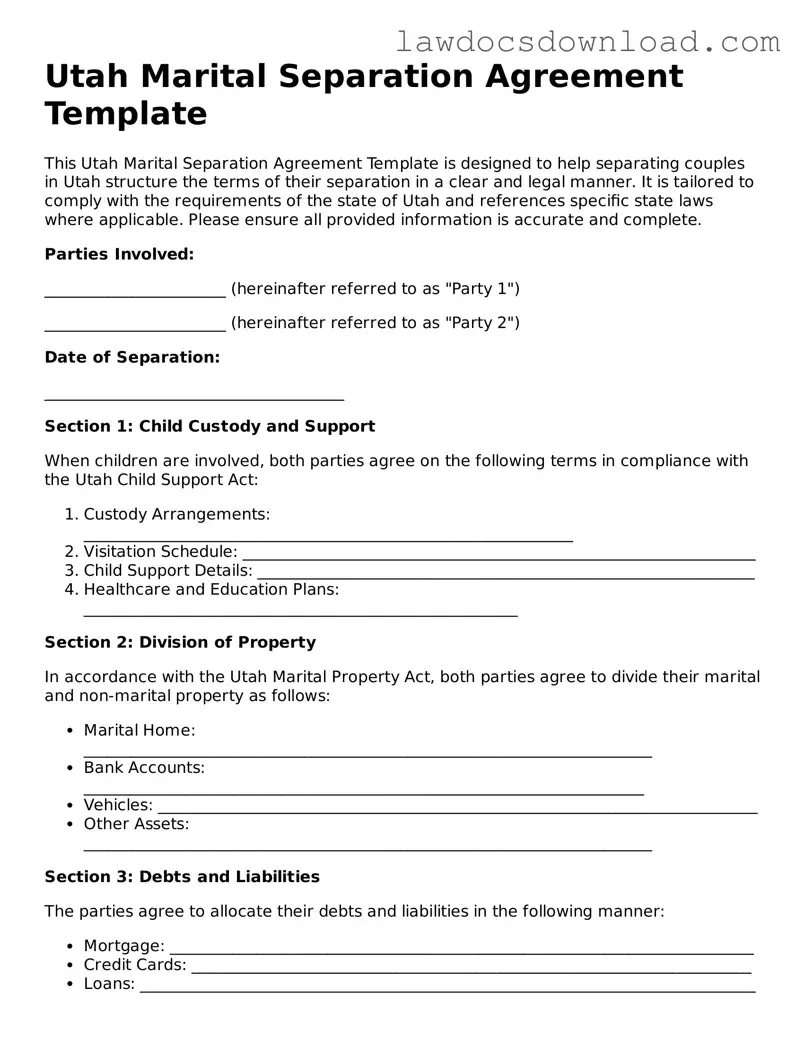Utah Marital Separation Agreement Template
This Utah Marital Separation Agreement Template is designed to help separating couples in Utah structure the terms of their separation in a clear and legal manner. It is tailored to comply with the requirements of the state of Utah and references specific state laws where applicable. Please ensure all provided information is accurate and complete.
Parties Involved:
_______________________ (hereinafter referred to as "Party 1")
_______________________ (hereinafter referred to as "Party 2")
Date of Separation:
______________________________________
Section 1: Child Custody and Support
When children are involved, both parties agree on the following terms in compliance with the Utah Child Support Act:
- Custody Arrangements: ______________________________________________________________
- Visitation Schedule: _________________________________________________________________
- Child Support Details: _______________________________________________________________
- Healthcare and Education Plans: _______________________________________________________
Section 2: Division of Property
In accordance with the Utah Marital Property Act, both parties agree to divide their marital and non-marital property as follows:
- Marital Home: ________________________________________________________________________
- Bank Accounts: _______________________________________________________________________
- Vehicles: ____________________________________________________________________________
- Other Assets: ________________________________________________________________________
Section 3: Debts and Liabilities
The parties agree to allocate their debts and liabilities in the following manner:
- Mortgage: __________________________________________________________________________
- Credit Cards: _______________________________________________________________________
- Loans: ______________________________________________________________________________
- Other Debts: _________________________________________________________________________
Section 4: Alimony/Spousal Support
Considering the factors set forth in the Utah Alimony Act, the following agreement has been reached:
Alimony Arrangement: _________________________________________________________________
Section 5: Other Terms
______________________________________________________________________________________
______________________________________________________________________________________
This agreement is made of the free will of both parties, without any undue pressure or influence. By signing this document, both parties agree to abide by its terms as outlined above. It is recommended to consult with legal counsel before executing this agreement to ensure understanding and compliance with Utah law.
Signature Party 1: _______________________ Date: _________________________
Signature Party 2: _______________________ Date: _________________________
Notary Acknowledgment
This document was acknowledged before me on ______________ (date) by _________________________ (name/s of signatory/parties).
Notary Public: ____________________________________
My commission expires: ____________________________
